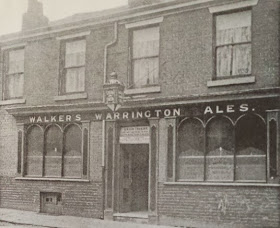Old House at Home, Middlewood Street, Salford, 1930. (c) Neil Richardson [1].
The Old House at Home beerhouse used to stand on Middlewood Street, which for most of its history ran between Oldfield Road and Ordsall Lane just in front of the long-lost Ordsall Lane Railway Station. Before the railway (the station was built in the 1860s), Middlewood Street just ran from Oldfield Road to Nangreave Street. At this time Ordsall Lane was known as Kent Place, which had some of Salford's first dreaded back-to-back dwellings alongside some older, larger and grander houses of a pre-industrial Salford era.
The Old House was on the south side of Middlewood Street on the corner with Charles Street and opened just before these changes, dating back to the 1850s. The Greatorex Brothers of the Queens Brewery, Moss Side owned the Old House until 1898 when it passed to the Empress Brewery, and then the Walkers of Warrington in the 1930s. Although included in the Hampson Street 1949 clearance scheme, the Old House at Home stayed open until the early 1960s [1]. Flats now stand along much of Middlewood Street and the car entrance is roughly where Charles Street once ran, marking the spot where the Old House at Home once was.
Former location of Old House at Home, Middlewood Street. (c) Google 2013. View Larger Map.

















































